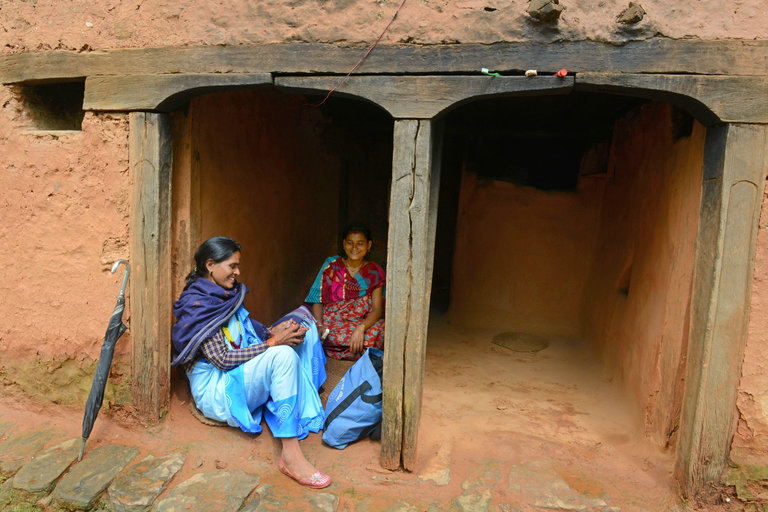Picture:Â A Nepalese health volunteer, left, counseling a pregnant woman at her home at the Dailekh district of Nepal.
One January morning in 2002, I met 15-year-old Sita Tamang in a prison in Kathmandu, the capital of Nepal. Her boyfriend, who had promised marriage, made her pregnant. Afterward, he gave her a pill to make her “feel stronger.†The pill aborted her pregnancy. Ms. Tamang was still delirious with pain and shock when the police arrested her and charged her with infanticide. A court gave her a life sentence.
In the late 1990s, 80 Nepali women were in prison for having undergone an abortion. It took Nepali activists three decades of advocacy to change the abortion laws. In March 2002, Nepal legalized abortion. Over the next two years, the women imprisoned for abortion were granted amnesty and released.
Nepal had a very high maternal mortality rate. For every 100,000 live births, 539 women died in 1996. Unsafe abortion was seen to be one of the reasons. Most women had little or no access to any health care during pregnancy or delivery. A poor country torn by a decade of insurgency, Nepal relied on outside help to provide health care, and the United States was the largest donor.
On Jan. 20, 2001, President George W. Bush assumed office. On that very first day in the White House, he imposed the “global gag rule,†which stopped United States government funding to overseas organizations that provide abortions or counseling on abortions.
As soon as abortion became legal in Nepal, the Family Planning Association of Nepal, the largest organization providing contraceptives, lost part of its American funding. It was doing pioneering work in expanding awareness of reproductive health and contraceptive use in Nepal. FPAN refused to renounce counseling or referrals on abortion. It was forced to lay off 60 health workers and give up its mobile health clinics on reproductive health in rural areas, and its capacity to provide contraceptives was substantially impaired.
The group didn’t use American funds for abortion or abortion counseling, but it worked with government hospitals and clinics that provided the procedure. At some clinics that received United States funding, “we had to build walls†to comply with the gag rule, recalled Shyam Thapa, a social scientist who advised the United States Agency for International Development. The walls separated the American-funded family planning section from the section providing abortion counseling.
To work in a clinic with American funding, doctors had to sign documents affirming that they would not provide abortion services anywhere. Nepal had a terrible scarcity of doctors. A decade and a half later, there are still just seven doctors, nurses and midwives for every 10,000 people. Most doctors remain in urban areas, while most people — and most maternal deaths — are in the countryside. Mr. Bush’s gag rule forced hospitals and clinics to post two doctors to do one person’s job: a doctor to talk about contraception, a different doctor to help with abortion.
Bureaucratic games like this affect the lives of women like Indra Maya Khadka, in the remote Khotang district. Some years back, when Ms. Khadka had trouble with her pregnancy in the final trimester, the nearest hospital, in the town of Diktel, was a day’s walk from her village and the hospital didn’t even have a doctor. Ms. Khadka had to wait four days to be airlifted by a helicopter to a Kathmandu hospital. She lost her child. Today there are three doctors in Diktel’s hospital serving the district’s 200,000 residents. Kathmandu, where most of the hospitals are, is a 10-hour drive away.
President Barack Obama’s administration lifted the global gag rule, allowing much needed support for reproductive health services. Equally, the larger forces of globalization and international migration helped. Hundreds of thousands of Nepali men moved to the Middle East for work. Their hard-earned remittances improved living standards for their families across the villages and towns of Nepal, which helped improve access to health care. Initiatives such as sending trained female volunteers across the country to increase awareness also helped to bring maternal mortality down to 258 deaths per 100,000 live births in 2015.
Nepal’s doctors are committed to bringing maternal mortality down further, but President Trump’s reintroduction of the global gag rule casts a shadow over their efforts. “We’ve been hearing rumors that there will be no money for family planning advocacy,†said Dr. Naresh Pratap K.C., who runs the Health Ministry’s family health division. “The impact of this will be huge.â€
In 2015, the Family Planning Association of Nepal received a U.S.A.I.D. grant of more than $5 million spread over four years. The grant helped the Family Planning Association of Nepal train more than 80 health workers in three districts. They were to go from house to house to educate people on family planning, set up health camps and screen for sexually transmitted infections and uterine cancer. If the Trump administration withholds funding, the program won’t take off.
American aid has made a very valuable contribution to women’s health, but these policy reversals undermine it. Nepali women’s welfare is vulnerable to the whims of each new administration.
U.S.A.I.D. is consulting with the State Department and other agencies on the new policy. A recent statement from the agency reads, “For additional information, we refer you to the White House.â€
By Subina Shrestha
Subina Shrestha, a journalist and filmmaker from Nepal, is a Nieman fellow at Harvard.







